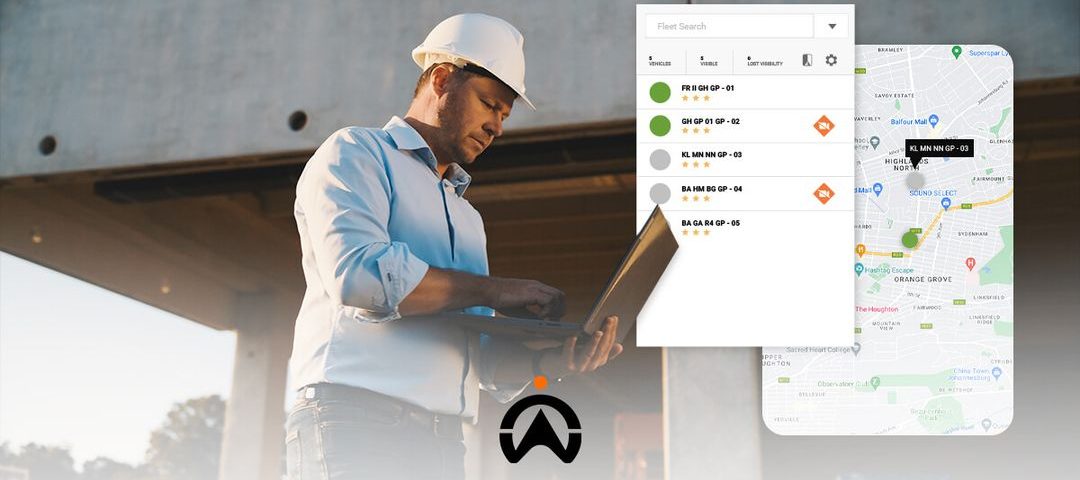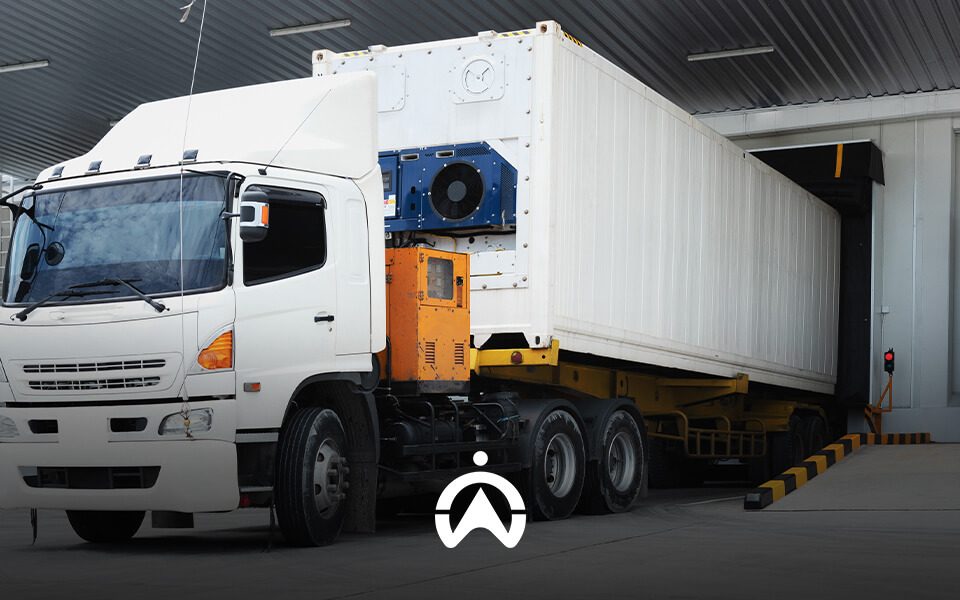Fleet Visibility: How Much Do You Really Know?
In the world of fleet management, seeing is believing, but when fleet visibility is compromised, businesses can find themselves fighting challenges that impact efficiency, customer satisfaction, and overall fleet costs.
Let’s explore fleet visibility and see its transformative potential for your business.
What is fleet visibility?
It’s not just about knowing where your trucks are, although that’s a great start.
Fleet visibility is all about staying in the know about your fleet in real time. It lets you track and understand every move your fleet makes – from where they are to the routes they take, how much fuel they’re using, and even keeping tabs on maintenance needs. It’s not just about pinpointing your drivers and vehicles; it also tracks task progression during deliveries or on-site services.
This crucial element of fleet management serves up valuable insights for decision-makers, fleet managers, and dispatchers, helping them fine-tune operations, ensure vehicles are used efficiently, and smartly allocate time for tasks.
Fleet visibility is the ace in the hole every fleet manager needs to keep their fleet operations running smoothly and optimally.
Core components of fleet visibility
Fleet visibility can highly influence operational efficiency, fleet costs, and customer satisfaction, and even ensure the overall health and productivity of a fleet of vehicles. It is a cornerstone in modern fleet management practices, allowing businesses to optimise their transportation and logistics processes, but how does this method work?
Here are the essential technologies needed to achieve optimum fleet visibility.
Vehicle tracking: GPS devices or onboard computers transmit location data, mapping your vehicles’ movements on a real-time map.
Telematics: Sensors track engine health, fuel usage, driver behaviour, and other vital metrics, providing insights into vehicle performance and driver habits.
Fleet management software: This central platform collates all the data, displays it on visual dashboards, generates reports, and enables communication with drivers.
Mobile apps: Drivers can access essential information like routes, schedules, and job updates through dedicated mobile apps, improving communication and efficiency.
Each of these plays its part in providing real-time location data, tracking vital metrics, centralising data, and enhancing communication and efficiency.

How do you boost fleet visibility and measure fleet performance?
As a fleet manager eager to enhance the game plan for your fleet but not quite knowing how to start, fear not! Boosting fleet visibility and measuring performance might sound like navigating uncharted territory, but it’s not as daunting as it seems.
Split your focus between your drivers and vehicles and their tasks and responsibilities:
- Fleet assetsTo amp up fleet visibility, organisations can dive into proactive monitoring and real-time tracking solutions. Picture it as having a bird’s-eye view of your fleet’s day-to-day activities. By embracing these high-tech tools, organisations can swiftly boost their fleet visibility, making the whole operation smoother than ever.
- Task visibility
Watching over your fleet isn’t just about knowing where they are; it’s about understanding what they’re up to. To accurately measure fleet performance, you can turn to Key Performance Indicators (KPIs) that will inform you on how effective your fleet management strategy is.The following are some of the most important KPIs for measuring fleet performance:
Boosting efficiency: This KPI zooms in on the overall efficiency, covering fuel use, maintenance costs, and vehicle utilisation rates.Enhancing productivity: Measures how productive your fleet is with completed jobs, delivery times, and task completion levels.Controlling costs: Keeps an eye on the bottom line by tracking fuel costs, maintenance expenses, and total expenses per asset.Driver behaviour and performance: Monitors driver performance, from sticking to schedules to fuel-savvy habits and safety prowess.
To properly monitor these metrics, fleet managers use fleet management software to collect and analyse the data. Thereafter, fleet managers can spot areas for improvement, set goals, and make savvy decisions to supercharge their fleet operations.
Signs that your fleet needs a fleet management system for increased visibility
Imagine managing your team as usual with the same methods you’ve used since opening your business. Everything seems fine until one day a series of unexpected events unfolds.
You get a call from a driver stuck in traffic, another report of vehicle troubles, and, to top it all off, a missed delivery deadline that leaves a valuable client less than impressed. As you juggle these challenges, it hits you: your fleet needs modern fleet management so you can be aware of the ins and outs of your fleet.
Recognising the signs that your fleet is in dire need of a fleet management system for a visibility boost is crucial.
Here’s a breakdown of what to look out for:
Poor resource utilisation
- Challenge: When you lack visibility, your fleet can become inefficient. Resources are either underused or overloaded, leading to lower productivity and higher operational costs.
- Solution: Fleet visibility tools show you how vehicles are used, driver availability, and workload distribution. This insight helps manage resources effectively and improves overall efficiency.
Increased operational costs
- Challenge: Insufficient visibility results in increased operational costs. Fuel expenses rise, and vehicle wear and tear escalates, impacting profitability.
- Solution: Fleet visibility solutions with advanced analytics pinpoint areas for improvement, leading to cost savings in fuel consumption and maintenance. It helps control operational expenses and enhances profitability.
Communication breakdowns
- Challenge: Without real-time visibility, communication between dispatchers and drivers suffers, causing misunderstandings, errors, and delays in task execution.
- Solution: Fleet visibility tools often come with communication features, facilitating seamless and instant communication between dispatchers and drivers.
Inaccurate tracking
- Challenge: The absence of accurate real-time tracking hampers monitoring and responsiveness, hindering quick adaptation to changes or unexpected events.
- Solution: GPS-enabled tracking systems provide precise, real-time location data for all vehicles, enabling accurate monitoring and timely decision-making.
How can fleet management improve your team’s visibility?
While basic tracking and monitoring are crucial, advanced fleet visibility solutions take it to the next level by providing a comprehensive and real-time understanding of a fleet’s operations.
These solutions offered in the previous section would take longer to put into practice and benefit from if conducted with early fleet management methods, such as paper logs and spreadsheets.
Now fleet managers can see an immediate change with the latest advanced fleet management software, offering a rich layer of information that improves overall operational efficiency and drives savings.
Some must-have features for a fleet management solution to increase visibility are:
Predictive maintenance: Use data analysis to foresee potential vehicle issues, prevent breakdowns, and ensure seamless operations. Through proactive monitoring and real-time tracking, organisations can efficiently enhance fleet visibility and overall operational efficiency.
Geofencing and alerts: Create virtual boundaries around specific areas your drivers should or shouldn’t operate in. Unauthorised entry or exit of these areas triggers alerts, promotes security and monitors movement.
Route optimisation: Real-time traffic updates and historical data analysis constantly adjust routes for optimal efficiency, saving you time and fuel.
Integrations: Seamlessly connect a fleet management system to your business platforms, such as accounting or warehouse management systems. This integration provides a comprehensive view of your operations, ensuring a holistic approach to management.

Turn to Cartrack Swaziland for complete real-time fleet visibility
As a global leader in data-driven offerings tailored to various business sectors, Cartrack Swaziland excels at seamlessly integrating with any fleet system, providing instant access to fleet data without unnecessary complexities.
Cartrack’s Fleet Management Software stands out in delivering complete visibility for vehicles, drivers, and cargo. Here are some industry-leading features that will help you track your fleet’s every move:
- Driver ID tags for increased asset usage controlEnsure secure and controlled driver-vehicle usage with Cartrack’s ID tags. Equipping each driver with a unique tag, this system requires a tap on a sensor within the vehicle to operate it. This ensures that only authorised drivers use designated vehicles, amplifying visibility and fleet safety.
- Geofence for fleet location monitoring
Cartrack’s geofencing feature allows fleet managers to establish virtual boundaries around any specific area, like project sites, company buildings and more. Managers receive notifications via SMS or email when a vehicle enters or exits these boundaries, contributing to heightened location monitoring and fleet visibility.
- Cartrack’s Delivery tool for live task updatesIt streamlines processes, offering full visibility into task progress beyond just tracking vehicle locations. This feature allows efficient job allocation to drivers and can optimise routes based on distance for faster turnaround times.Let’s put all this theory into practice and delve into a success story that exemplifies how Cartrack’s comprehensive solutions made a significant impact for a well-known South African courier company.
The Courier Guy Success Story
The Courier Guy is South Africa’s leading courier service provider, with over 2,200 vehicles in their arsenal. With a growing number of drivers, customers, and vehicles to manage, the company needed a system in place that gave fleet managers full visibility of the entire fleet operation, simplified business operations, improved task management, and increased customer satisfaction.
Cartrack offered their Delivery software as a solution to track vehicles’ live location and set requirements for drivers to digitally send a photo or e-signature as electronic proof of delivery, improving driver accountability and keeping customers updated through the entire delivery process by sending them automated emails and SMSs.
The Courier Guy also used Cartrack’s AI-powered camera live-streaming technology to improve safety, security, and accountability within their fleet. The digital eyes live-track driver behaviour and audibly alert drivers in real-time when dangerous driving gestures occur, allowing drivers to quickly rectify their behaviour, resulting in fewer damaged goods, speeding fines and stronger brand reputability.
“Cartrack’s technology allows us to focus on our drivers, customers, cargo, and fleet all from one platform. It puts us in control from dispatch to delivery.” — Jeffrey Wheeler, Assistant Fleet Manager – Courier Guy.
Gain complete visibility in every part of your business with Cartrack Swaziland
Don’t navigate the challenges of fleet management in the dark, use Cartrack’s advanced fleet management software to understand your fleet’s every move and see every opportunity for improvement.
Chat with us and see what we can do for you and your business today.




